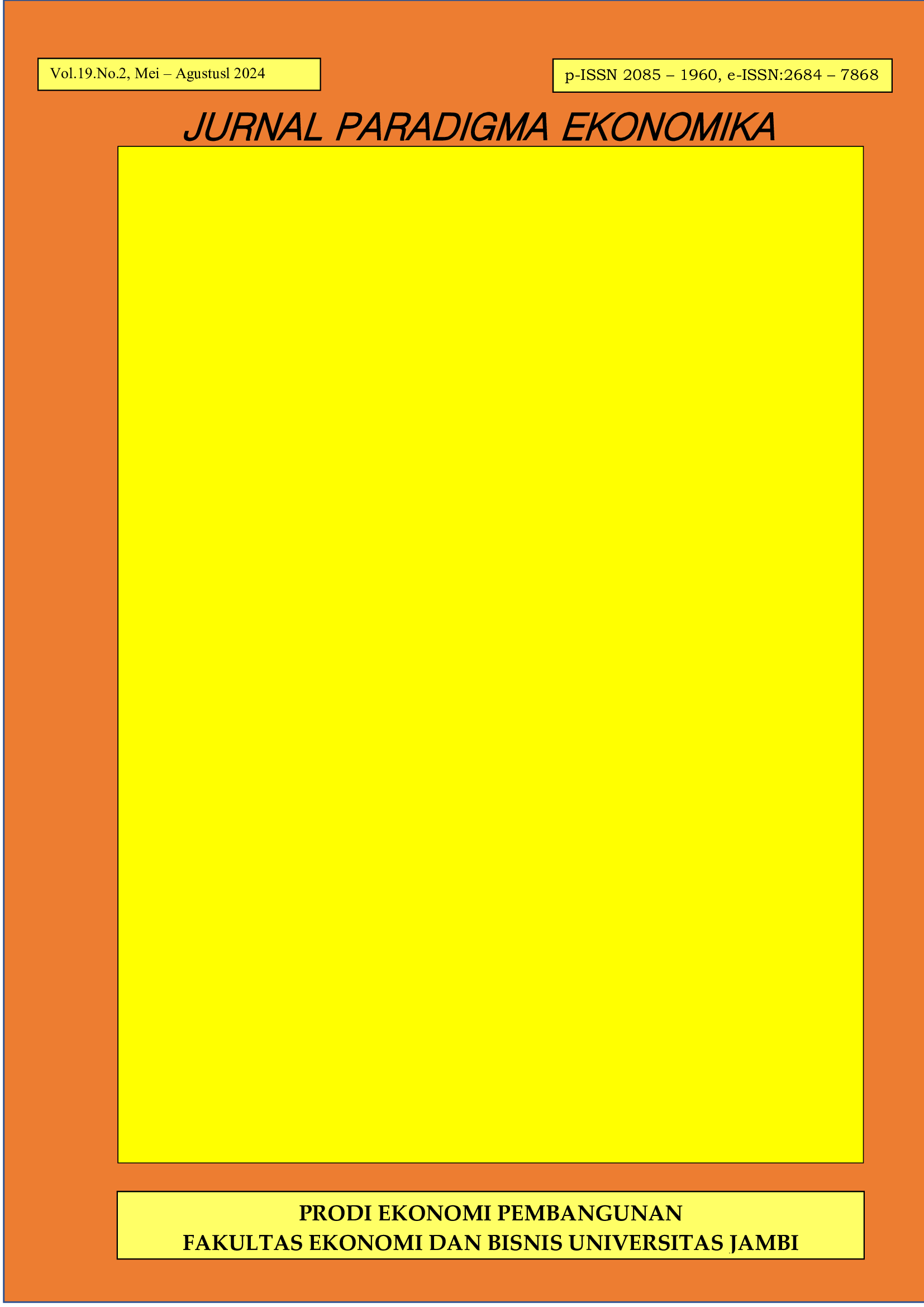Islamic micro-banking model with a target market of ultra-micro enterprises (case study of BTPN Syariah)
Keywords:
Micro-banking, social capital, ultra-micro, community empowermentAbstract
This research differs from previous research, in that this is focused upon analyzing the performance of the BPTN Syariah (compliant with Islamic banking rules) Bank, which is a commercial financial institution (bank) fully committed to financing the poor of society (ultra-micro enterprises), which comprise its market segment. This financing segment, in the category of ultra-micro and small enterprises, is considered to be one of high risk for a bank, The aim of this research was to evaluate to just what extent the performance of the BTPN Syariah was focused upon the financing of the ultra-micro enterprise segment of the poor of society. Based upon the analysis of the Risk Profile, of Good Corporate Governance, of Earnings, and of Capital (RGEC), it may be concluded that the BTPN Syariah had a much better rating than those of other Islamic banks, with a low level of risk and a high level of profitability. This different performance was brought about by the BTPN Syariah being supported by representatives/agents who empower and guide customers (customer service officers), which had an impact upon the creation of social capital. This showed that customers in the ultra-micro enterprise segment were of low risk when financed, and that the widening of financial access for the poor of society was needed.
Downloads
References
Abdillah, R., Hosen, M. N., & Muhari, S. (2016). The Determinant Factors of an Islamic Bank’s Profitability and Liquidity in Indonesia. Knowledge Horizons – Economics, Vol. 8(2), 140-147.
Adusei, M. (2019). Board gender diversity and the technical efficiency of microfinance institutions: Does size matter?. International Review of Economics & Finance, 64, 393-411.
Ahmad, A. B. R., & Al-Mubarak, T. (2014), Rural Development Scheme (RDS) of the Islamic Bank of Bangladesh Limited (IBBL) through the Lenses: An Analysis of an Alternative Microfinance Program. International Journal of Excellence in Islamic Banking and Finance, Vol. 4(1), 1-17.
Atahau, A. D. R., Huruta, A. D., & Lee, C. W. (2020). Rural microfinance sustainability: Does local wisdom driven-governance work?. Journal of Cleaner Production, 267, 122153.
Ault, J. K., & Spicer, A. (2009). Does one size fit all in microfinance? New directions for academic research. In Moving beyond storytelling: Emerging research in microfinance (pp. 271-284). Emerald Group Publishing Limited.
Baklouti, I. (2013). Determinants of Microcredit Repayment: The Case of Tunisian Microfinance Bank. African Development Review, Vol. 25(3), 2013, 370 – 382.
Baofeng, S., Xue, Z., & Yizhe, D. (2019). Credit rating and microfinance lending decisions based on loss given default (LGD). Finance Research Letters.
Boehe, D. M., & Cruz, L. B. (2013). Gender and microfinance performance: Why does the institutional context matter?. World Development, 47, 121-135.
Diani, A., & Brabet, J. (2016). Exploring New Ways to Assess the Impact of Microfinance: What Role for the Capability Approach?. Finance and Economy for Society: Integrating Sustainability, 253-269.
Doshi, K. (2010). Sustainability and impact of microfinance institutions: A case study of ACCION San Diego. In Positive Design and Appreciative Construction: From Sustainable Development to Sustainable Value (pp. 275-295). Emerald Group Publishing Limited.
Effendi, J. & Utami, A. R. (2016). The Effect of Social Capital on Customers’ Repayment rates at an Islamic Microfinance Institution. Al-Iqtishad: Journal of Islamic Economics, Vol.8(2), 227-242.
Feigenberg, B., Field, E. M. & Pande, R. (2010). Building Social Capital through Microfinance. NBER Working Paper Series, No. 16018.
Grootaert, C. (1999). Social Capital, Household Welfare and Poverty in Indonesia. The World Bank Working Paper.
Gueyie, J., Manos, R., & Yaron, J. (Eds.). (2013). Microfinance in developing countries: Issues, policies and performance evaluation. Springer.
Hassan, A., & Saleem, S. (2017). An Islamic microfinance business model in Bangladesh: Its role in alleviation of poverty and socio-economic well-being of women. Humanomics, 33(1), 15-37.
Hosen, M. N., & Muhari, S. (2019). Non-Performing Financing of the Islamic Rural Bank Industry in Indonesia. Banks and Bank Systems, Vol. 14(1), 20-28.
Hosen, M. N., & Muhari, S. (2018). A Comparison of the Soundness Level of Islamic Banks in Indonesia and Malaysia. Etikonomi, Vol. 17(1), 111-122.
Mersland, R., & Strom. (2009). Performance and governance in microfinance institutions. Journal of Banking and Finance, Vol.33, 662-669.
Miled, K. B. H. & Rejeb, J. B. (2015). Microfinance and Poverty Reduction: A Review and Synthesis of Empirical Evidence. Procedia - Social and Behavioral Sciences, Vol. 195, 705 – 712.
Murdoch, J. 1999. The role of subsidies in microfinance: evidence from the Grameen Bank. Journal of Development Economics, Vol.60, 229 - 248.
Nugroho, A. E. (2008). A Critical Review of the Link between Social Capital and Microfinance in Indonesia. Jurnal Ekonomi dan Bisnis Indonesia, Vol.23, 124-142.
Rankin, K. N. (2002). Social Capital, Microfinance, and the Politics of Development. Feminist Economics, Vol. 8(1), 1-24.
Sila, M. A. (2010). Lembaga Keuangan Mikro dan Pengentasan Kemiskinan: Kasus Lumbung Pitih Nagari di Padang. Jurnal Sosiologi Masyarakat, Vol.15(1), 1-19.
Supranto, J. (2004). Econometrics. Jakarta: Ghalia.
Van Greuning, H., Gallardo, J. S., & Randhawa, B. K. (1999). A framework for regulating microfinance institutions (Vol. 2061). World Bank Publications.
Von Pischke, J. D. (2008). New partnerships for innovation in microfinance. Matthäus-Maier (Ed.). Berlin: Springer.
Vong, J. & Song. I. (2015). Lowering the Interest Burden for Microfinance. Chapter in Book: Emerging Technologies for Emerging Markets, 55 – 69.
Wagner, C., & Winkler, A. (2013). The vulnerability of microfinance to financial turmoil–evidence from the global financial crisis. World Development, 51, 71-90.
Downloads
Published
How to Cite
Issue
Section
License
Copyright (c) 2024 Syafaat Muhari, Muhamad Nadratuzzaman Hosen, Yulizar Djamaluddin Sanrego

This work is licensed under a Creative Commons Attribution-ShareAlike 4.0 International License.









